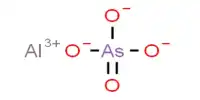The world’s smallest antenna was built using DNA by researchers at the Université de Montréal. The device, which is only 5 nanometers long, functions as a two-way radio, receiving one color of light and then re-emitting a second hue based on the structural changes in the protein it linked. Nature Methods published an article about this novel monitoring method. The researchers combined DNA with a fluorescent chemical. DNA is easier to work with because it is a natural building block for nanostructures and nanomachines. The key innovation is that the antenna’s receiver also functions as a sensor, allowing researchers to track how the protein behaves.
Because DNA is used, this method has a lot of flexibility. The chemistry of DNA is straightforward and programmable. As a result, depending on the protein in the issue, antennae can design to meet a variety of research goals. In a statement, lead author Scott Harroun said, “The DNA-based nanoantennas can be manufactured with varying lengths and flexibilities to maximize their performance.” “A fluorescent molecule can be easily attached to DNA, and then this fluorescent nanoantenna can be attached to a biological nanomachine, such as an enzyme. We constructed five nanometer-long antennas by fine-tuning the nanoantenna design, which produces a separate signal when the protein is executing its biological role.”
The fluorescent technique of communication has a wide range of uses, according to scientists, and monitoring does not necessitate cutting-edge laboratory equipment. Once the nanoantenna is in place, standard spectrofluorometers, which are ubiquitous in many labs, would suffice. “For the first time, we were able to detect the action of the enzyme alkaline phosphatase with a range of biological substances and medications in real-time,” Harroun stated.
“This enzyme has been linked to a variety of disorders, including cancer and intestinal inflammation,” says the researcher. This method is highly fascinating since it allows researchers to analyze the actual activity of proteins. Not only does having such a feedback system provide insights into medicine, but it also provides insights into chemical manufacturing.
“This new method can assist chemists to find promising novel medications and direct nano engineers to design improved nanomachines, in addition to helping us understand how natural nanomachines work or malfunction, resulting in disease,” said co-author Dominic Lauzon. The team emphasizes the nanoantenna’s adaptability and it can be used to track both minor and huge changes. This can be handy if you are attempting to figure out how a single protein moves or if you are screening a lot of them at once.
















